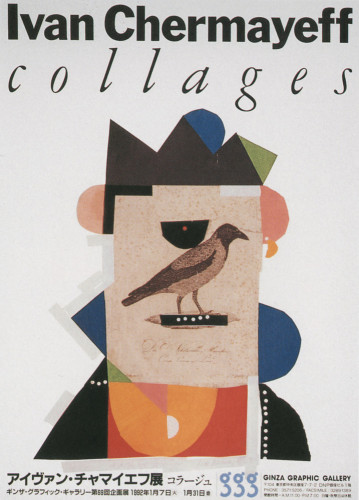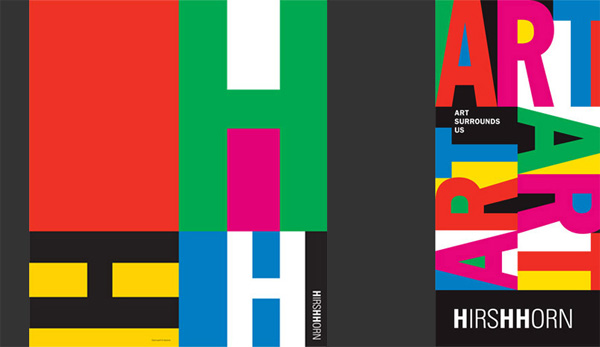From the Bauhaus to your house…
Art Chantry (art@artchantry.com):
In the pantheon of graphic design professionals, there are very very few who have reached the levels occupied by Ivan Chermayeff. He’s considered one of the grand masters of 20th century graphic design, a designer’s designer. His noteworthy projects are little things like Chase bank (the very first high abstract corporate logo.). He and his old business partners Tom Geismar and Robert Brownjohn frankly DEFINED modern postwar graphic design.
Chermayeff was born the son of a famous architect who hung out with the Bauhaus gang. He tells stories of hanging out as a child on the roof of the estate mansion spending long lazy afternoons using toy bb guns to shoot squirrels with “uncle” Walter Gropius. go figger.
When he and his cronies in design thought/crimes, Tom Geismar (later winner of the president medal) and Robert Brownjohn (probably the very best conceptual designer in american history), were the young turks in the early 1950’s post war graphic design scene in New York City, they survived on the usually available trashy clients hat most of us do in our early stages. Clients like publishers (book covers) and record companies (LP covers) and the arts (tv evangelist identities and theater posters). They were a long way form the corporate monsters they later became.

AC: this particular label - command records - had beautifully printed covers by all soirts od great desingers f ht eera -chermayeff, brownjohn, de guisti, s. neil fujita and (yes!) joseph albers! so, if you dig this cover and dig albers, start looking in the thrift stores for the Command label records. nobody collects them much and they're everywhere for really really cheap!
Robert ‘BJ’ Brownjohn, in particular was a bit of a character. He was a notorious drug user and jazz afficionado. He stayed up ridiculous hours hanging with poets and artists and musicians. He’d stagger into the office late and come up with all the brilliant ideas they needed and stagger off to his hang outs an hour or so later and disappear for the rest of the day. He got the point where he would simply call up clients in the middle of the night and tell them his big ideas over the phone!
Imagine calling the CEO of a major women’s make-up company at 3:30 in the morning and saying, “now picture this! imagine in your head a gun in a holster! and those bullet rings? Instead of actual bullets, they’re tubes of different color LIPSTICKS!!!”. Try to imagine not getting canned. He didn’t. He’d sell the project. He was that charming.
After BJ left the group (some say asked to leave. history is mum on the subject). in the mid 1960’s he moved to swingin’ London and became the toast of the town. There he designed the projected-on-a-naked-girl titles for the early James Bond films. He sold that idea by projecting some type on the wall of a dark room and then – in front of his clients – tearing his shirt covering his naked bloated body and wiggling around while the typography danced on his belly. Then he said, “now, imagine I’m a pretty girl!”. Instant sale!

Read More:http://vawlog.vawidea.com/en/tag/logo-design/Chermayeff and Geismar (Chermayeff and Geismar) This is the one by Ivan Chermayeff and Tom Geismar founded design firm, worked, including Mobil Oil, Standard Chartered Bank, Xerox (Xerox, Taiwan, said Xerox), the United States National Geographic magazine and other corporate design logo, also for the Armani Exchange, Hearst corporations and other companies to do graphic design.
Later, among so many other things, he designed the record cover for
rolling stones’ ‘let it bleed’. Then he died. Lived fast, Died young.Meanwhile Chermayeff and Geismar continued to wow the New York scene with their work. This record cover (a quickie junk piece) is a fine example of how smart their work had become. Please note the subtlety of the color “strips” in the broken typography. The typography owes a lot to BJ’s earlier jazz cover design work (they continued to use BJ’s early concepts for some time. They were so good that you could endlessly recycle them).
They later successfully marketed this as a typeface to professional type companies, where it became the defacto corporate typeface of the New York “hippie” scene (such as it was”. in fact one of their eventual clients became the premier new york psychedelic rock club “the electric circus”, doing many of their great posters.
Through their stunning book cover work they connected into the corproate side of New York (and their parent’s connections sure didn’t hurt either). Soon they were working on publications for Pepsi Cola and designing “identities” for small banks. And the like. By the end of the decade they were the cream of the crop of hot new designers, rivaling only Pushpin for historical significance of the defining the era. They still are amnong the best working even today. True legends.
At one time (late 80’s or early 90’s. i forget exactly), I was invited by the national AIGA (american institute of graphic arts) to participate in the ‘planning committee” of one of their annual conventions (to be held in chicago). It was an extremely prestigious team of a dozen hyper famous designers that included Ivan Chermayeff! Just sitting at the same table with this power crew totally confused me.

Read More:http://designarchives.aiga.org/#/entries/%2Bid%3A3391/_/detail/relevance/asc/0/7/3391/ivan-chermayeff-collages/1 Design firm: Chermayeff & Geismar, Inc. Design director: Ivan Chermayeff Illustrator: Ivan Chermayeff
I had no idea why they wanted me there. The only thing I could figure was that they wanted me to bring some sort of “young designer” perspective or something. So I arrived loaded for bear with two big shopping bags full of books and samples of crazy-ass people that would really fun and cool to turn them onto as possible speakers. It turned out to be a bit of a stodgy crowd.
I came in and started showing them Von Dutch and Ed Roth and Robert Williams and Survival Research Laboratories and Genesis P. Orridge and Jamie Reid and Malcolm Maclaren and 23 envelope and David Carson (still unknown then) and Phase 2 and Chris Burden and a slew of others I forget. Try to imagine what that convention could have been like if they had paid any attention to me and actually brought in people like SRL to perform. it would have brought down the house (literally).
Instead, I just got a nervous silence. A few minutes of dead air. Then one of those old famous dudes turned to the chairman and said, “gosh, do you think we could get milton to do something again this year?”
pffft!

Read More:http://flavorwire.com/83851/hirshhorn-re-identifies ---According to the designers at Chermayeff & Geismar, We took the most distinctive aspect of the word “Hirshhorn,” the three H’s, and emphasized it, making a memorable wordmark. As part of the complete identity system, we redesigned the museum’s magazine and created a distinctive style using vibrant colors for other publications, posters, and promotional materials. We spoke to founding partner Ivan Chermayeff, who further explained: “We decided to emphasize the ‘H’s’ in the Hirshhorn logotype simply because it’s such a rare occurrence for a word in the English language to have three of them.” ---
It was a total disaster and I was never invited back. In fact, I wasn’t even asked to participate any further in planning that year. I scared the shit out of them, I guess. But, the whole reason I tell this little story is that over at the far end of the table, all by himself, that elegant and sophisticated old lion, Ivan Chermayeff, was frantically writing down everything he could . He kept borrowing the books and looking for contacts and addresses in the back pages.
I have a distinct memory of Ivan Chermayeff frantically scribbling down the the phone number and address of the Church of the Sub Genius!!. Nobody else gave a shit, but he was crazy for the stuff. He was still soooooo cool!
ADDENDUM:
Art Chantry:i might argue that there really hasn’t been much connection between the “fine design world” and most avant garde creative activities for the past half-century or more (the post war period). the current narrative of design activities and it’s history centers around business and money and power. most avant garde activities (like music) really doesn’t. there are a few odd periods of time when the two lined up (like that weird time in the late 60’s when underground music like psych went mainstream) but for the most part, the examination of this history is in retrospect. the fact that most graphic design is practiced under extreme financial hardship is lost in the glaze of dominating business prominence of the ‘fine design’ power elite. it’s a world where people like me (and most of my co-horts) are excluded. elitism is a powerful thing – especially when that elite holds the power of historical documentation. but. that is falling apart with the impact of the new mass media. there’s a new leveling happening. the old heroes are being forgotten extremely quickly and being replaced with a new higher level of design mediocrity coupled with extravagant technical virtuosity. the graphic design language is becoming popularized in ways never before dreamed possible.







 COMMENTS
COMMENTS